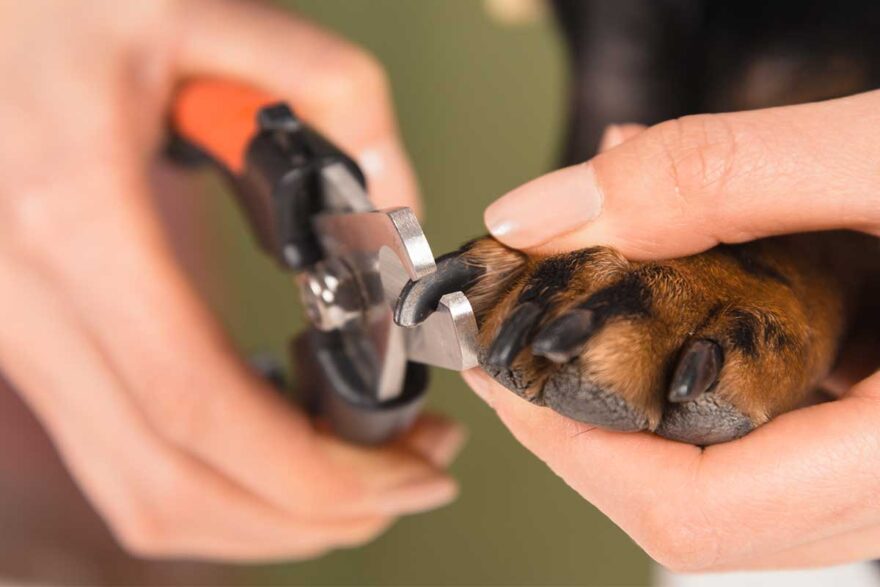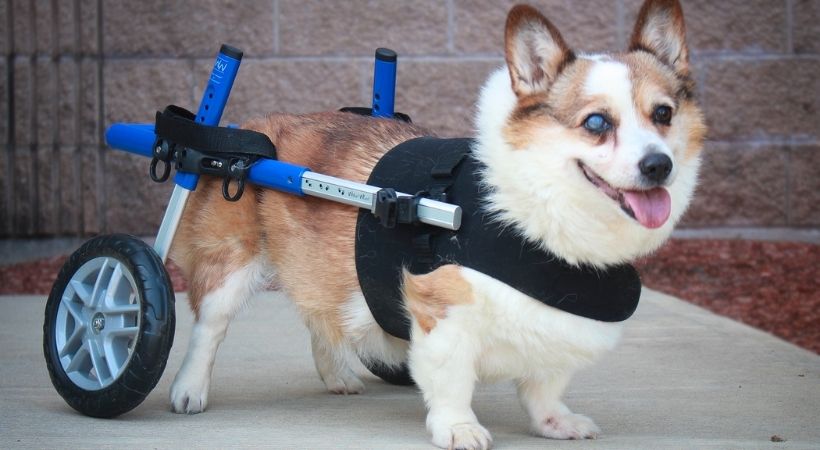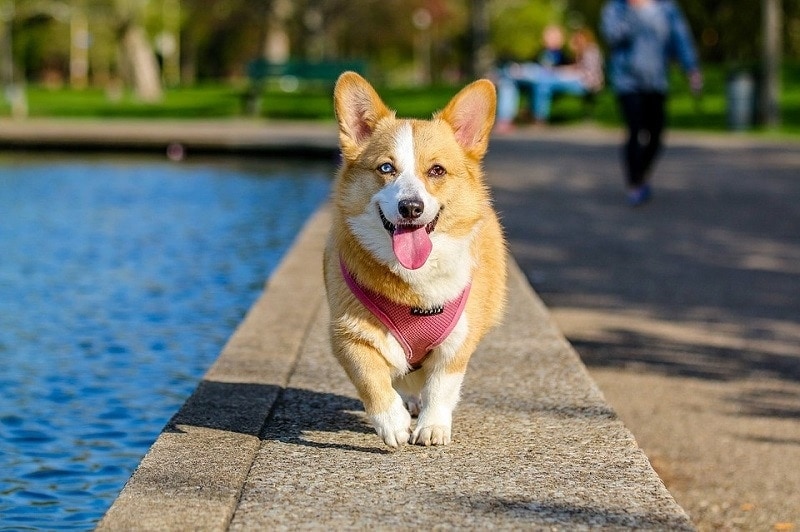-
Table of Contents
- Introduction
- How to Properly Cut a Puppy’s Nails: A Step-by-Step Guide
- Tips for Keeping Your Puppy’s Nails Trimmed and Healthy
- The Benefits of Regularly Trimming Your Puppy’s Nails
- How to Choose the Right Nail Clippers for Your Puppy
- Common Mistakes to Avoid When Cutting Your Puppy’s Nails
- Conclusion
“Puppy Pawfection: Get the Perfect Cut Every Time!”
Introduction
Nail trimming is an important part of puppy care. Keeping your puppy’s nails trimmed helps to prevent painful ingrown nails, scratches on furniture, and other issues. It can also help to keep your puppy’s feet healthy and comfortable. With the right tools and a little patience, you can learn how to cut the nails of a puppy dog. This guide will provide you with the information you need to get started.
How to Properly Cut a Puppy’s Nails: A Step-by-Step Guide
Properly cutting a puppy’s nails is an important part of their grooming routine. It is important to ensure that the nails are cut correctly to avoid any potential injury to the puppy. This step-by-step guide will provide you with the necessary information to properly cut your puppy’s nails.
Step 1: Gather the Necessary Supplies. Before you begin, make sure you have the necessary supplies. You will need a pair of nail clippers, a styptic powder, and a treat for your puppy.
Step 2: Prepare Your Puppy. Make sure your puppy is comfortable and relaxed before you begin. You can do this by providing them with a treat and petting them.
Step 3: Examine the Nails. Carefully examine the nails to identify the quick, which is the pink area in the center of the nail. Avoid cutting the quick as it can be painful for your puppy.
Step 4: Cut the Nails. Once you have identified the quick, you can begin to cut the nails. Make sure to cut the nails in small increments to avoid cutting the quick.
Step 5: Stop the Bleeding. If you accidentally cut the quick, use the styptic powder to stop the bleeding.
Step 6: Reward Your Puppy. After you have finished cutting the nails, reward your puppy with a treat for being a good pup.
By following these steps, you can ensure that your puppy’s nails are properly cut. It is important to be patient and take your time when cutting your puppy’s nails to avoid any potential injury.
Tips for Keeping Your Puppy’s Nails Trimmed and Healthy
1. Invest in a quality nail clipper: Investing in a quality nail clipper is essential for keeping your puppy’s nails trimmed and healthy. Look for a clipper that is designed specifically for dogs and is made of high-quality materials.
2. Get your puppy used to the clipper: Before you start trimming your puppy’s nails, get them used to the clipper. Let them sniff it and get comfortable with it. You can also reward them with treats when they interact with the clipper.
3. Start trimming when your puppy is calm: It’s important to start trimming your puppy’s nails when they are calm and relaxed. If they are too excited or anxious, they may struggle and make the process more difficult.
4. Trim the nails in small increments: When trimming your puppy’s nails, it’s important to do it in small increments. This will help you avoid cutting the nails too short and causing pain or discomfort.
5. Be aware of the quick: When trimming your puppy’s nails, be aware of the quick. This is the pinkish area in the center of the nail that contains nerves and blood vessels. If you cut too close to the quick, it can be painful and cause bleeding.
6. Use a nail file: After trimming your puppy’s nails, use a nail file to smooth out any rough edges. This will help prevent your puppy from scratching themselves or others.
7. Reward your puppy: After trimming your puppy’s nails, reward them with treats or praise. This will help them associate nail trimming with positive experiences.
The Benefits of Regularly Trimming Your Puppy’s Nails
Regularly trimming your puppy’s nails is an important part of their grooming routine. Not only does it help keep their nails healthy, but it can also help prevent painful injuries and infections. Here are some of the benefits of regularly trimming your puppy’s nails.
First, trimming your puppy’s nails helps keep them at a healthy length. If your puppy’s nails are too long, they can become uncomfortable and even painful for them to walk on. This can lead to your puppy developing an abnormal gait, which can cause long-term joint and muscle problems. Keeping your puppy’s nails trimmed regularly will help ensure that they are at a comfortable length.
Second, trimming your puppy’s nails can help prevent painful injuries. If your puppy’s nails are too long, they can easily get caught on carpets, furniture, and other surfaces. This can cause painful tears and breaks in the nail, which can be very uncomfortable for your puppy. Regularly trimming your puppy’s nails can help prevent these types of injuries.
Third, trimming your puppy’s nails can help prevent infections. If your puppy’s nails are too long, they can easily become infected. This can lead to a variety of health problems, including pain, swelling, and even fever. Regularly trimming your puppy’s nails can help prevent these types of infections.
Finally, trimming your puppy’s nails can help keep their paws clean. If your puppy’s nails are too long, they can easily collect dirt and debris, which can lead to infection. Regularly trimming your puppy’s nails can help keep their paws clean and healthy.
Overall, regularly trimming your puppy’s nails is an important part of their grooming routine. Not only does it help keep their nails healthy, but it can also help prevent painful injuries and infections. By regularly trimming your puppy’s nails, you can help ensure that they stay healthy and comfortable.
How to Choose the Right Nail Clippers for Your Puppy
Choosing the right nail clippers for your puppy is an important part of their grooming routine. Not only do the right clippers help keep your pup’s nails healthy and trimmed, but they can also help prevent painful injuries. Here are some tips to help you choose the right nail clippers for your puppy.
First, consider the size of your puppy’s nails. If your pup has small nails, you’ll want to look for clippers specifically designed for small breeds. If your pup has larger nails, you’ll want to look for clippers designed for larger breeds.
Second, consider the type of clippers you’ll need. If your pup’s nails are thick and strong, you’ll want to look for clippers with a strong, sharp blade. If your pup’s nails are thin and brittle, you’ll want to look for clippers with a softer blade.
Third, consider the material of the clippers. Stainless steel clippers are the most durable and long-lasting, but they can be more expensive. Plastic clippers are less expensive, but they may not be as durable.
Finally, consider the comfort of the clippers. Look for clippers with a comfortable grip and a non-slip handle. This will help you keep a steady grip while trimming your pup’s nails.
By following these tips, you can find the right nail clippers for your puppy. With the right clippers, you can keep your pup’s nails healthy and trimmed, and help prevent painful injuries.
Common Mistakes to Avoid When Cutting Your Puppy’s Nails
1. Cutting Too Short: One of the most common mistakes when cutting a puppy’s nails is cutting them too short. This can be painful for the puppy and can cause bleeding. To avoid this, make sure to only cut the tip of the nail and not the quick, which is the pink area in the center of the nail.
2. Not Using the Right Tools: It is important to use the right tools when cutting a puppy’s nails. Using scissors or clippers that are too big can cause the nail to split or break, which can be painful for the puppy. Make sure to use the right size and type of clippers for your puppy’s nails.
3. Not Being Prepared: Before cutting your puppy’s nails, make sure to have everything you need ready. This includes the clippers, a styptic powder or cornstarch to stop any bleeding, and treats to reward your puppy for being a good boy or girl.
4. Not Being Patient: Cutting a puppy’s nails can be a stressful experience for both you and your puppy. Make sure to take your time and be patient with your puppy. If your puppy is scared or anxious, take a break and try again later.
5. Not Trimming Regularly: It is important to trim your puppy’s nails regularly to keep them from getting too long. If the nails get too long, they can become uncomfortable for your puppy and can even cause them to walk differently. Trim your puppy’s nails every two to three weeks to keep them at a comfortable length.
Conclusion
In conclusion, knowing how to cut the nails of a puppy dog is an important skill for any pet owner. It is important to be gentle and patient when cutting the nails of a puppy dog, as it can be a stressful experience for them. It is also important to use the right tools and to be aware of the quick, which is the sensitive area of the nail that contains blood vessels and nerves. With the right tools and knowledge, cutting the nails of a puppy dog can be a safe and stress-free experience for both the pet and the owner.
- Video Not Found!!
- Error Code : 404
- Message : The playlist identified with the request's
playlistIdparameter cannot be found.











